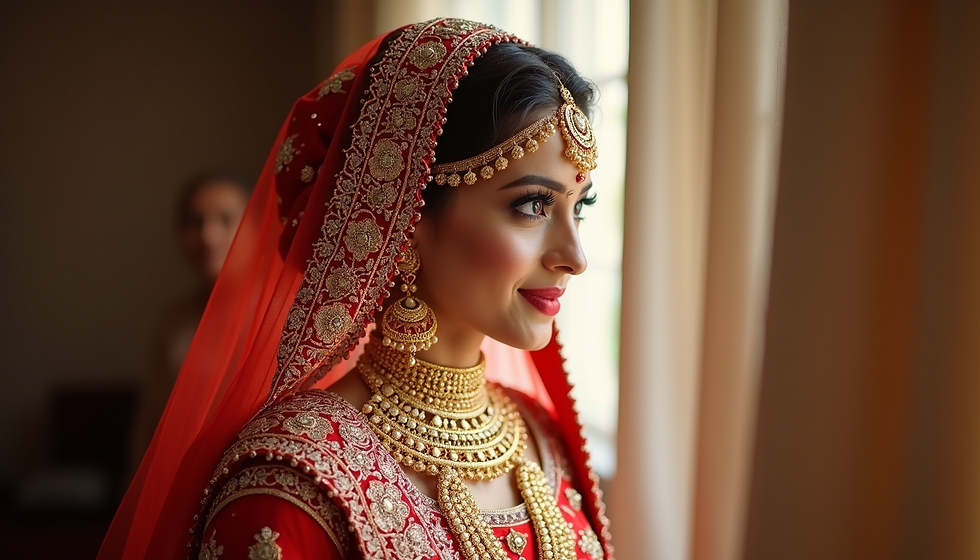The Timeless Charm of Punjabi Phulkari Dupattas: A Cultural Gem in Every Stitch
- Harpreet
- Jul 14
- 2 min read
A Phulkari dupatta is a traditional hand-embroidered scarf or stole that originates from Punjab, India. Made primarily on coarse cotton fabric called khaddar, it is richly adorned with intricate thread embroidery in geometric and floral patterns. The embroidery is traditionally done using vibrant silk threads, creating a visually striking contrast against the base fabric.
These dupattas are more than just accessories—they are storytelling textiles, reflecting the emotions, rituals, and history of Punjabi culture.
The Origin and History of Phulkari
The origins of Phulkari date back to the 15th century and are deeply rooted in rural Punjab. Historical references even trace Phulkari back to the era of Guru Nanak Dev Ji. Traditionally, it was the women of the house who crafted these dupattas for weddings, festivals, and family functions.

Phulkari was not just an embroidery style; it was a cherished part of a bride's trousseau, often taking months or even years to complete. Each piece was unique, handcrafted with care, and passed down as a family heirloom.
How Are Phulkari Dupattas Made?

The making of a Phulkari dupatta is an intricate and time-consuming process:
Fabric Selection: Traditionally made on khaddar, modern versions use chiffon, georgette, or cotton-silk blends for comfort and flow.
Design Drafting: No stencils or tracings are used—designs are created freehand or guided by experience.
Embroidery: Using floss silk threads, artisans embroider from the reverse side of the fabric, creating a vibrant mosaic of motifs on the front.
Color Palette: Bold hues like magenta, orange, royal blue, and mustard dominate, symbolizing joy and festivity.
Finishing Touches: The dupattas are often finished with mirror work, sequins, or borders to add extra elegance.
Each dupatta can take weeks to complete, depending on the complexity of the pattern.
Styling Phulkari Dupattas with Punjabi Outfits
One of the most versatile elements in ethnic fashion, a Phulkari dupatta can be styled in countless ways:
With Punjabi suits: Pair a classic salwar kameez or Patiala suit with a brightly embroidered Phulkari for a timeless look.
As a statement piece: Drape it over a plain kurta-pajama or Anarkali to add a burst of color and texture.
Bridal ensembles: Heavily embroidered Phulkari dupattas are often used in mehndi or sangeet ceremonies, symbolizing tradition and color.
Jaago: The Phulkari dupatta is a staple accessory when attending Jaago celebrations. The lively theme of a Jaago (which literally translates to wake up!) matches perfectly with the vibrant and colourful look of the Phulkari dupatta.
Why Phulkari Dupattas Are Making a Comeback
Thanks to growing interest in sustainable and handcrafted fashion, Phulkari dupattas are seeing a strong resurgence. Fashionistas and designers alike are incorporating Phulkari into modern collections, blending tradition with trend. They’re not just accessories—they’re cultural narratives wrapped in silk threads.
Harpreet Kaur (Owner of Apna Clothing) -
"I love Phulkari Dupattas, mainly because I feel a huge connection to my heritage when wearing these. I believe they perfectly embody the culture of Punjab and the spirit of Punjabi people, lively and vibrant! They are the perfect piece to help distinguish a Punjabi Bride and become a family heirloom"





Comments